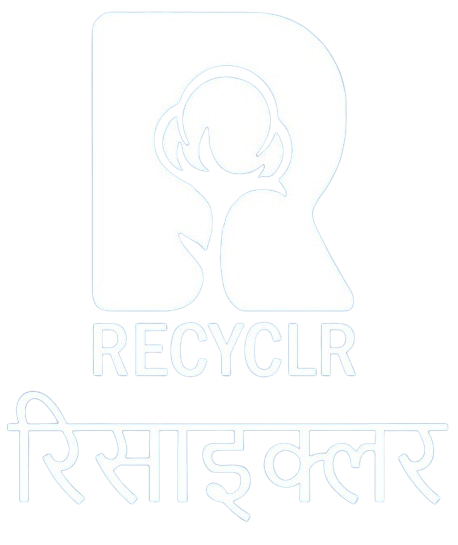Is Fast Fashion Costing us more than we think?
How often do we think about where our clothes land up?
Fast fashion has made it easier than ever to stay on top of the latest trends, offering stylish clothing at prices that seem almost too good to be true. But behind the racks of cheap, trendy garments is a hidden cost that’s much harder to see. From overflowing landfills to polluted water, the fast fashion industry is taking a toll on our environment in ways most of us never even think about.

92 Million Tons of Clothing Waste:
The Price We’re Paying for Fast Fashion. We love the thrill of getting new clothes quickly and affordably, but that constant turnover comes at a steep environmental cost. Every year, the fashion industry generates a staggering 92 million tons of textile waste. Most of it ends up in landfills, contributing to pollution and environmental destruction on a massive scale. Toxic chemicals, wasteful production processes, and the sheer volume of discarded clothes are having a devastating impact on the planet. Fast fashion is cheap on the surface, but the real cost is far greater.
How Fast Fashion is Hurting the Planet
Pollution and Waste: A Growing Crisis
The fast fashion industry’s rapid production cycles have a huge environmental footprint. To keep up with demand, natural resources are over-extracted, leading to environmental degradation.
Waste Generation:
The amount of clothing waste being produced is shocking. Cheap, low-quality clothes are worn only a few times before being tossed aside, overwhelming landfills and adding to the waste crisis.
Pollution:
The industry’s reliance on synthetic fabrics, toxic dyes, and unsustainable production methods releases harmful chemicals into the air and water. This pollution not only damages ecosystems but also contributes to the rise in greenhouse gas emissions that are driving climate change.
Loss of Biodiversity:
Pollutants from textile factories flow into rivers and oceans, poisoning aquatic life and destroying ecosystems. Synthetic clothing sheds microplastics that are finding their way into the food chain, impacting wildlife and, eventually, human health.
Water Use:
The Hidden Cost of Our Clothes
The fast fashion industry is also one of the biggest consumers of water.
Water-Intensive Production:
Just one cotton shirt can take up to 2,700 liters of water to produce. In areas where water scarcity is already an issue, this puts enormous strain on local water supplies.
Water Pollution:
Textile dyeing is responsible for 20% of global water pollution. Factories discharge harmful chemicals into nearby water sources, endangering both aquatic life and the health of surrounding communities.
Fast Fashion Isn’t as Cheap as It Seems
While fast fashion may seem like a good deal at first, it’s a different story when you look at the bigger picture.
Frequent Replacements:
The clothes we buy from fast fashion retailers are often made cheaply and don’t last. This leads to constant replacements, and over time, we end up spending more on multiple purchases than we would on fewer, high-quality items that last longer.
Environmental Cleaning Costs:
Dealing with the environmental damage caused by fast fashion isn’t cheap. Governments and communities are spending millions on waste management, pollution control, and efforts to combat climate change.
Health Impacts:
Chemical pollution from textile factories doesn’t just affect the environment—it affects people too. Communities near production hubs often suffer from health problems linked to chemical exposure, increasing healthcare costs for both individuals and governments.
What Can We Do?
It’s time to rethink how we approach fashion. The choices we make when shopping for clothes have far-reaching consequences, but they can also have a positive impact. We can all play a role in making fashion more sustainable by adopting slow fashion practices.
How to Embrace Slow Fashion
Slow fashion is all about making thoughtful, intentional decisions when it comes to what we wear. Here’s how you can get started:
Buy Less, Choose Better: Focus on quality over quantity. Invest in well-made pieces that will stand the test of time.
Support Sustainable Brands: Look for companies that prioritize ethical production practices and use eco-friendly materials.
Opt for Sustainable Fabrics: Natural and recycled materials, like organic cotton and Tencel, are better for the planet.
Care for Your Clothes: Take good care of your garments to make them last longer. Washing less frequently, using cold water, and avoiding the dryer can make a big difference.
Recycle and Upcycle: Don’t toss old clothes in the trash. Find ways to recycle or repurpose them to reduce waste.
We All Have a Role to Play
The fast fashion problem isn’t something that brands can solve on their own. It’s a global issue that requires action from consumers, companies, and policymakers alike. To limit climate change and meet environmental goals, we need to work together to transform the fashion industry into something more sustainable.
At the Global Alliance for Textiles Sustainability Council, we are committed to tackling textile waste and promoting a circular economy for fashion. Our focus is on reducing waste, promoting recycling, and encouraging the use of sustainable materials throughout the entire garment lifecycle.
Every step counts. By choosing slow fashion and making more thoughtful purchases, we can help reduce the environmental impact of our clothing and support a healthier, more sustainable planet.
The fashion future is in your hands—will you make the change?
